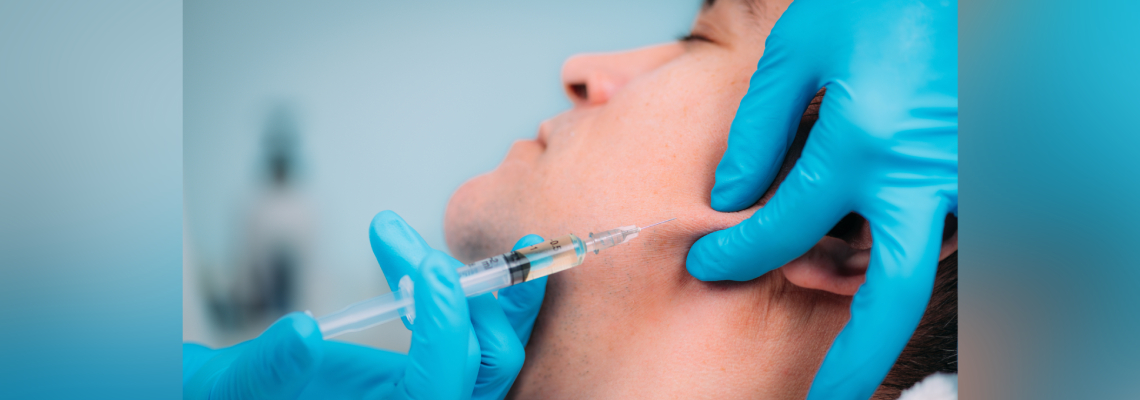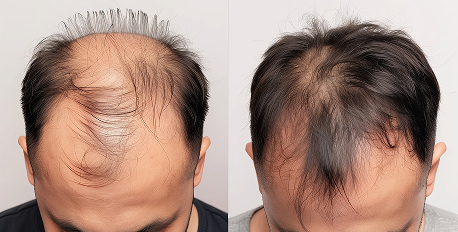Decoding the World of Injectable Neurotoxins: Everything You Need to Know
Injectable neurotoxins have revolutionized the cosmetic industry, offering individuals non-surgical solutions to combat signs of aging, manage medical conditions, and enhance their appearance. With their increasing popularity, understanding these products is crucial for anyone considering them. This guide comprehensively overviews neurotoxin injections, including their science, types, uses, and potential side effects.
Understanding Injectable Neurotoxins
Injectable neurotoxins temporarily block nerve signals to muscles, leading to muscle relaxation. This effect is primarily used to reduce the appearance of dynamic wrinkles, which form due to repetitive facial movements like frowning, squinting, or smiling. Botulinum toxin is the most well-known neurotoxin injection, and its brand names include Botox, Dysport, and Xeomin.
How Do Injectable Neurotoxins Work?
The science behind cosmetic neurotoxins is fascinating and complex. Neurotoxins, particularly Botulinum toxin, work by inhibiting the release of acetylcholine, a neurotransmitter responsible for muscle contraction. By blocking acetylcholine, the neurotoxin prevents the muscle from contracting, leading to an overlying skin's smoother and more relaxed appearance.
The effects of injectable neurotoxins are temporary, typically lasting three to six months. This temporary effect makes it a popular choice for individuals seeking a non-permanent solution to wrinkles and fine lines.
Types of Injectable Neurotoxins
Several types of neurotoxin injections are available on the market, each with unique characteristics and uses. Understanding the differences between these products can help you decide which is right for you.
1. Botox (Botulinum Toxin Type A)
Botox is the most recognized brand of cosmetic neurotoxins. It was the first Botulinum toxin to receive FDA approval for cosmetic use 2002. Botox is commonly used to treat crow's feet, forehead lines, and frown lines. Beyond cosmetic uses, it is also approved for treating medical conditions such as chronic migraines, excessive sweating (hyperhidrosis), and muscle spasticity.
2. Dysport (Botulinum Toxin Type A)
Dysport is another popular injectable neurotoxin, similar to Botox but with a slightly different formulation. It spreads more quickly, making it a preferred choice for treating larger areas, such as the forehead. Dysport is also FDA-approved for treating cervical dystonia, a condition characterized by involuntary muscle contractions in the neck.
3. Xeomin (Botulinum Toxin Type A)
Xeomin is a newer injectable neurotoxin often referred to as a "naked" version of Botox. It contains only the active ingredient (Botulinum toxin) without any accessory proteins found in Botox and Dysport. This makes Xeomin less likely to cause resistance in patients who receive regular injections. It is FDA-approved for treating frown lines, cervical dystonia, and blepharospasm (uncontrollable eyelid twitching).
4. Jeuveau (Botulinum Toxin Type A)
Jeuveau, also known as "Newtox," is the latest addition to the family of cosmetic neurotoxins. It was specifically developed for cosmetic purposes and is marketed as a more affordable alternative to Botox. Jeuveau is FDA-approved for treating glabellar lines (the vertical lines between the eyebrows).
5. Myobloc (Botulinum Toxin Type B)
Unlike the other neurotoxins mentioned, Myobloc is a Botulinum toxin type B. It is typically used for patients who are resistant to Botulinum toxin type A products. Myobloc is FDA-approved for treating cervical dystonia and is occasionally used off-label for cosmetic purposes.
Uses of Injectable Neurotoxins
Injectable neurotoxins are incredibly versatile, with many applications in the cosmetic and medical fields. Below are some of the most common uses.
Cosmetic Uses
-
Wrinkle Reduction: Injectable neurotoxins are primarily used to reduce the appearance of dynamic wrinkles, such as crow's feet, forehead lines, and frown lines.
-
Facial Slimming: Injecting neurotoxins into the masseter muscles (the muscles used for chewing) can achieve a slimmer, more contoured jawline.
-
Brow Lift: A subtle brow lift can be achieved by strategically injecting neurotoxins into specific muscles around the eyes and forehead.
-
Lip Flip: A lip flip is a popular procedure where neurotoxins are injected into the upper lip to create a fuller, more defined appearance without the need for dermal fillers.
Medical Uses
-
Chronic Migraines: Botox is FDA-approved for preventing chronic migraines in adults who experience 15 or more headache days per month. Chronic migraine prevention treatment typically involves 31 injections, each delivering 5 units.
-
Hyperhidrosis (Excessive Sweating): Neurotoxins can be injected into the underarms, palms, or soles of the feet to reduce excessive sweating by blocking the nerve signals that stimulate sweat glands. Research shows mixed results, but substantial evidence indicates that Botox can decrease underarm sweat production by over 50% for a minimum of six months.
-
Muscle Spasticity: Neurotoxins treat muscle spasticity in conditions such as cerebral palsy, stroke, and multiple sclerosis.
-
Overactive Bladder: Botox is approved for treating overactive bladder symptoms, such as urinary urgency and incontinence, by relaxing the bladder muscles.
-
Cervical Dystonia: This condition, characterized by involuntary neck muscle contractions, can be managed with neurotoxin injections.
Potential Side Effects and Risks
While injectable neurotoxins are generally safe when administered by a qualified professional, they do carry some risks and potential side effects.
Common Side Effects
-
Bruising and Swelling: Mild bruising and swelling at the injection site are common and usually resolve within a few days.
-
Headache: Some patients experience headaches following neurotoxin injections, particularly when treating the forehead area.
-
Temporary Muscle Weakness: Depending on the area treated, some patients may experience temporary muscle weakness, affecting facial expressions.
Rare but Serious Side Effects
-
Drooping Eyelid (Ptosis): If the neurotoxin spreads beyond the targeted area, it can cause temporary drooping of the eyelid or eyebrow.
-
Difficulty Swallowing or Breathing: In rare cases, neurotoxin injections can cause difficulty swallowing or breathing, particularly when treating the neck or throat area.
-
Allergic Reactions: Although rare, some patients may experience an allergic reaction to the neurotoxin, leading to symptoms such as rash, itching, or difficulty breathing.
Reducing the Risks
To minimize the risks associated with neurotoxin injections, it is essential to choose a qualified and experienced provider. Patients should also disclose their entire medical history, including any medications or supplements they are taking, as certain substances can increase the risk of bruising or adverse reactions.
Conclusion: The Future of Injectable Neurotoxins
The world of injectable neurotoxins is continually evolving, with ongoing research and development leading to new products and applications. As technology advances, we expect to see even more refined and targeted treatments that offer longer-lasting results with fewer side effects.
Are you looking for the best provider of injectable neurotoxins? The DigiMEDSPA Directory offers a comprehensive list of trusted Med SPA professionals. Browse verified reviews and performance ratings to find the right expert. Start your journey to a refreshed and rejuvenated appearance today.











